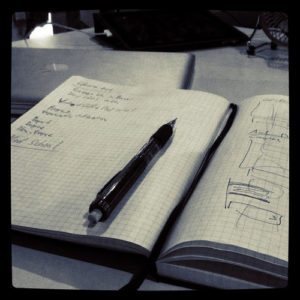A couple months ago, we talked about making a business case for a content-first approach. What we didn’t talk about then was how that content-first approach works—and how to give your designers everything they need to succeed in building a website, blog, or other content delivery system that supports your content (and business) goals.
Today, I’d like to remedy that oversight. Let’s talk about what your designer needs to have and know to deliver a design that supports your content:
1. Sample content for each template type.
For a blog that will include articles, video posts, photo essays, and interviews, give your designer one sample interview, a sample photo essay, a sample article, and a sample video post. Make sure you include everything you want built into your templates (will the video have some intro text? Will the interview begin with a short bio and a photo of your interviewee? Will the photo essay photos have captions? Make sure to include these things in your sample content).
Giving your designer real content to work with frees them up to focus on design instead of thinking through all the things you might want to include on a page or in an article. (Plus, it helps keep revision time down.)
2. Design guidelines.
When you’re developing a content strategy (and/or content) up front, you’re probably thinking through things like SEO, usability, business goals, CMS systems, and other technology, form fields, sidebar items, and publishing schedules. If any of these things impact design, your designer needs to know about them. For example:
- If you’re prioritizing SEO, ask your designer to always use web-safe fonts and never include text in an image.
- If you want to include downloads in the sidebar on some of the pages, make sure your designer includes a download area in the design for those pages’ templates.
- If you want a demo button that can be used in two templates, you designer needs to know what the button will say and where it will go.
In short, don’t make your designer guess about the content. Be clear about is requirements and goals.
3. Overall vision.
Your designer is a strategic part of your team, so make sure they’re in the loop when it comes to strategy. Your designer should understand the overall goals of the content marketing initiative, as well as the details of why you’re asking for these specific guidelines.
If possible, offer to let them read the full strategy document or sit in on your overview meeting. They don’t have to read the full document, but let them know it’s there and you value their input. This will make for not only a better design, but a respected and happy designer.
A note on collaboration
Giving your designer these tools up front will help you get the most out of your design. Instead of creating content to fit a container, you’re creating a container designed for your specific content.
That said, let’s not forget about up front collaboration. If you can include a creative director, designer, or UX professional in the creation of your strategy, your project will increase in quality and probably save some time and money down the road. So whenever possible, make sure to fold these people into your process from the beginning. There’s such a thing as too few cooks in the kitchen too.
Have anything to add?
If you work closely with strategy projects and design teams, we’d love to hear from you. How else can the content team help set your designers up for success? What do you deliver when it’s time to kick off the design phase? Please add any additional feedback in the comments.

